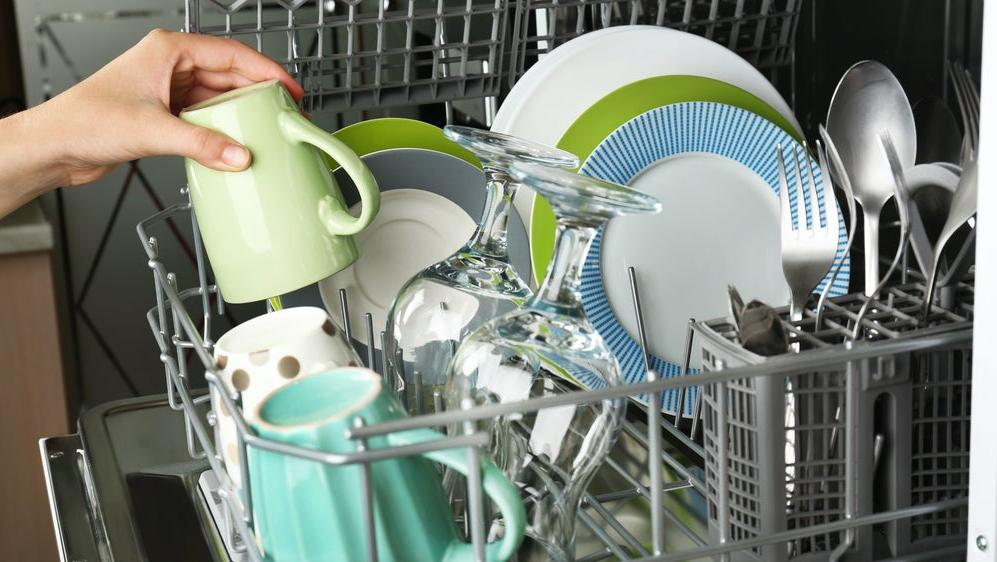How To Get Your Dishes Cleaner And Drier, Every Time
A few small changes in habit could make your kitchen chores easier.
Sometimes when I'm unloading plastic containers from the top rack of the dishwasher I think to myself, how tragic that neither I nor my children nor my children's children will live to see a day when these vessels are dry once again. While my beloved dishwasher can leave plates, wine glasses, and silverware streak-free, squeaky clean, and bone-dry after a wash cycle, even the smallest sour cream tub will take the better part of a day to stop dripping. Thanks to a recent article over at BBC Future, I might finally know why.
BBC Future explains that one part of the answer to this irritating conundrum lies in "good old-fashioned thermodynamics." Most other objects we load into a dishwasher, including ceramic or porcelain plates and bowls and metal utensils, retain heat better than plastic; as a result, they hold on to more of the heat from the water and steam in a wash cycle, and because they stay warmer longer, that warmth helps evaporate any water left on the surface. Plastic, meanwhile, grows room temp and stays soggy, its water unable to evaporate faster than a snail's pace.
There's also the fact that plastic is derived from oil—and we all know oil doesn't play nice with water. A scientist tells BBC Future that any water that comes into contact with plastic immediately forms beads and puddles rather than spreading out into a thin layer, as it might on a glass surface. This clumping makes it harder for the water to evaporate. Additionally, many plastic items such as storage containers have a textured surface for easy gripping, but that means that it'll also "grip" any water it comes into contact with, liquid settling in the tiny grooves.
How to make your dishwasher work for you
We might never fully solve the issue of drippy plastic, but there are a few steps you can take to streamline your dishwashing experience. Here are a few tips:
- Load plastic at an angle. If you're loading multiple plastic containers into the dishwasher, try to stagger them so that the rim of each one is being held up by the bottom of the one beside it, all of them tilted about 45 degrees, so that the water can run off the surface instead of pooling in the indentations. If you have to drip-dry the containers after unloading, configure them in the same way so that gravity is always assisting evaporation.
- Use a rinse aid—but not too often. I use both Finish Jet-Dry and Cascade Power Dry interchangeably; both work great. These products minimize the need for pre-rinsing dishes before running a wash cycle and leave dishes with a drier, shinier surface than detergent alone. Just don't use more than a few drops of this stuff more than every several cycles; enamored with the results, I started using it too often and my dishes got paradoxically cloudy and streaky as a result.
- Use an in-sink drying rack. This simple product fits into the bottom of your sink and keeps dishes elevated slightly above the bottom, which not only keeps your sink from getting too scratched up by stray forks and knives but also helps your clean dishes drip-dry into the drain rather than sitting in their own runoff. It's one of those tools you never realize you're missing until the day you decide to drop 15 bucks and change your life. Best of all, whenever it starts looking gunky, the rack itself is dishwasher-safe.
